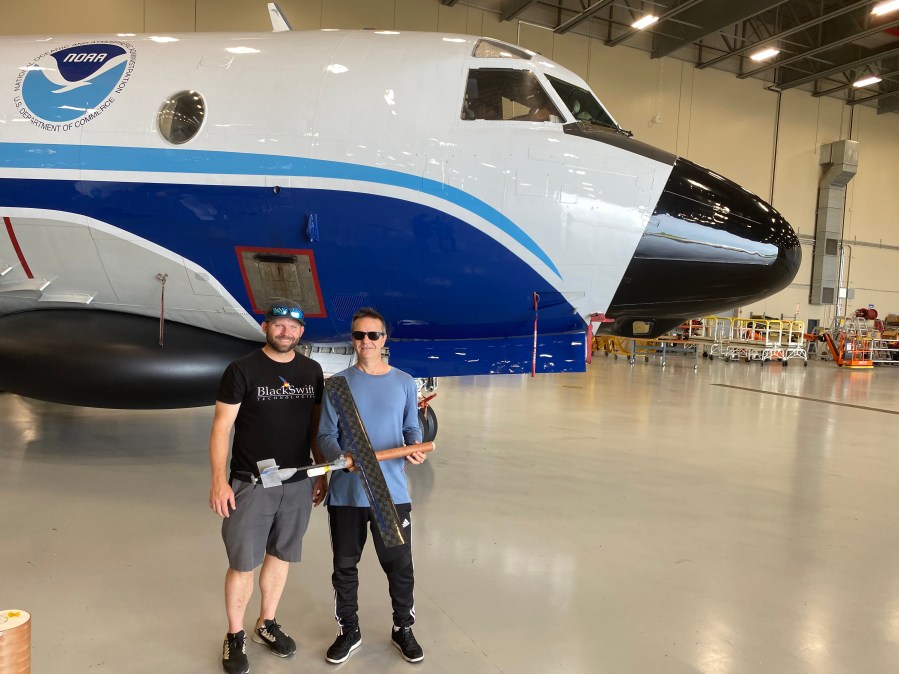LAKELAND, Fla. (WFLA) – The Hurricane Hunters at the NOAA Aircraft Operations Center in Lakeland are some of the only people who fly into a hurricane on purpose.
But even they have areas they will not go.
Enter: drones.
“With these uncrewed systems, we can now collect data in the parts of the storm that we don’t want to be,” said Lt. Commander Becky Shaw, a Hurricane Hunter and test pilot at NOAA.
NOAA has been testing three models of uncrewed aircrafts that drop out of the Hurricane Hunter P-3 planes, including the Altius-600 and BlackSwift models.

They are able to collect data in lower altitudes that have never before been captured, due to crew safety risks.
A crew member will be operating the drone while on the Hurricane Hunter plane.
“We’re going to launch it in a tube form, it’ll spread its wings in flight and it will fly at a low altitude while we’re at our normal 8-10,000 foot altitude and we’ll be collecting data from both aircrafts,” said LCDR Shaw.
Unlike dropsondes, which take a snapshot of conditions as they fall to Earth, the drones can stay in the air for hours.
“To be able to fly those altitudes in and out, it’s going to change a lot of what we know about these storms,” said LCDR Shaw.
The crews have been testing the aircrafts’ abilities to safely drop from the plane, stay in range and collect accurate information.
“Now we’re ready to go to take it into a storm which I think this year will be the first year that we take this into a storm and then see how the data comes back,” said LCDR Shaw.
Once the drones have completed their mission and transmitted the data, they will not be able to be recovered.
“We’re responsible for making sure it’s not going to hang out out there and go find a ship or go find another plane. So we make sure that the system will land on the water, it will ditch into the water once we get all the data off of it,” said LCDR Shaw.






